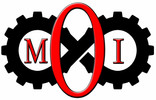Lathes are one of the oldest tools used by humans, with evidence of lathe-like machines dating back over 3,000 years. They are used to shape and manipulate wood, metal, and other materials. Over the centuries, lathes have evolved from simple hand-operated devices to complex computer-controlled machines that can produce highly precise components. In this blog post, we will take a closer look at the history and different types of lathes.
History of Lathes:
The lathe can be traced back to ancient Egypt, where it was used to turn bowls and other objects. The lathe continued to evolve over the centuries, with the Romans using a lathe to make precision parts for their aqueducts and other engineering projects. During the Middle Ages, lathes were used to create intricate wood carvings and ornate furniture.
In the 18th century, the Industrial Revolution brought about significant changes in the manufacturing industry, and lathes were no exception. The introduction of steam power made it possible to create larger and more complex lathes, which led to increased productivity and lower costs.
Today, lathes are used in a wide variety of industries, including automotive, aerospace, and construction. Modern lathes are highly automated and can be controlled with computers, allowing for greater precision and faster production times.
Types of Lathes:
There are several different types of lathes, each with its own unique features and capabilities. Let's take a look at some of the most common types of lathes.
Wood Lathe:
Wood lathes are used to turn and shape wood into various forms. They are commonly used to create furniture, bowls, and other decorative items. Wood lathes can be operated by hand or with a motor, and they come in a range of sizes to accommodate different types of projects.
Metal Lathe:
Metal lathes are used to shape metal parts and components. They are commonly used in the manufacturing industry to create precision parts for machinery and other equipment. Metal lathes can be operated manually or with computer controls, and they come in a range of sizes and configurations.
Engine Lathe:
The engine lathe is one of the most common types of metal lathe. It is a large, heavy-duty machine that is used to create cylindrical parts, such as shafts and bushings. Engine lathes are typically operated manually, and they can be configured with a range of cutting tools and accessories.
Vertical Turret Lathes (VTLs):
VTL's are large industrial machines used to turn and shape cylindrical workpieces. These machines have a vertical spindle that rotates the workpiece, and a turret that holds cutting tools which can be indexed to perform different operations.
VTLs are capable of machining very large and heavy workpieces that cannot be accommodated by traditional horizontal lathes. They are often used in industries such as aerospace, oil and gas, and power generation to produce large components like turbine blades, propellers, and shafts.
VTLs come in different sizes and configurations, ranging from small machines for machining parts with diameters of a few inches, to huge machines that can handle workpieces up to 50 feet in diameter and weighing several tons.
In addition to traditional turning operations, VTLs can also perform drilling, boring, threading, and milling operations. They are highly versatile machines that can be programmed to perform complex operations with a high degree of precision and accuracy.
Overall, VTLs are essential machines for industries that require the machining of large and heavy cylindrical components. They offer high precision, efficiency, and versatility, making them an important tool for modern manufacturing.
CNC Lathe:
CNC (computer numerical control) lathes are highly automated machines that are controlled by computers. They are capable of producing highly precise parts and components, and they can be programmed to perform complex operations. CNC lathes are commonly used in the manufacturing industry to produce parts for aerospace, automotive, and other industries.
Mini Lathe: Mini lathes are small, portable machines that are commonly used by hobbyists and DIY enthusiasts. They are typically used to create small-scale projects, such as pens, chess pieces, and other decorative items. Mini lathes are available in both wood and metal versions, and they are often operated by hand.
Conclusion:
Lathes have played a crucial role in shaping the modern world, and they continue to be an essential tool in a range of industries. From ancient Egypt to the present day, lathes have evolved to become highly advanced machines that can produce precise and complex components. Whether you are a professional machinist or a hobbyist woodworker, there is a lathe out there that can help you bring your projects to life.

